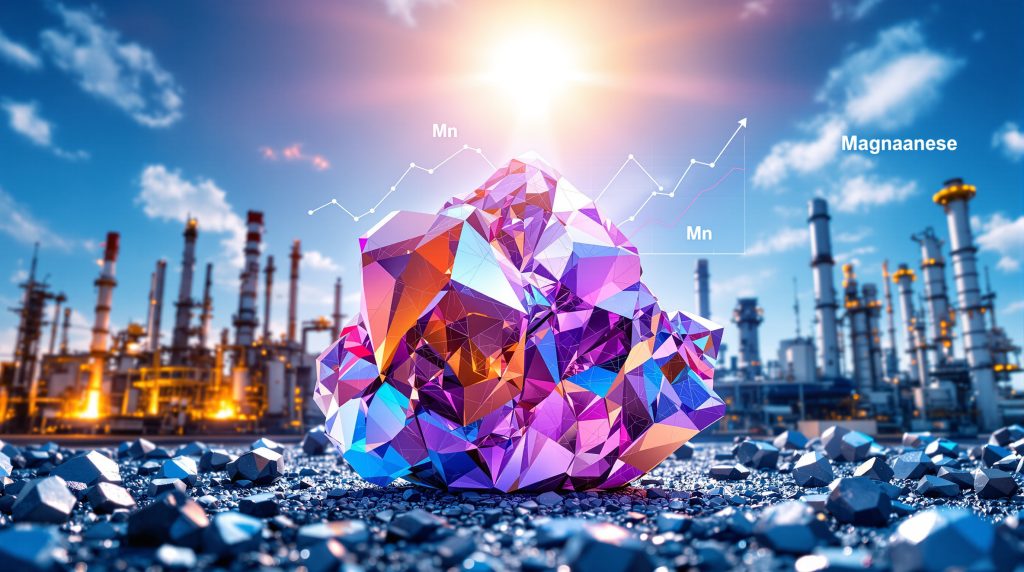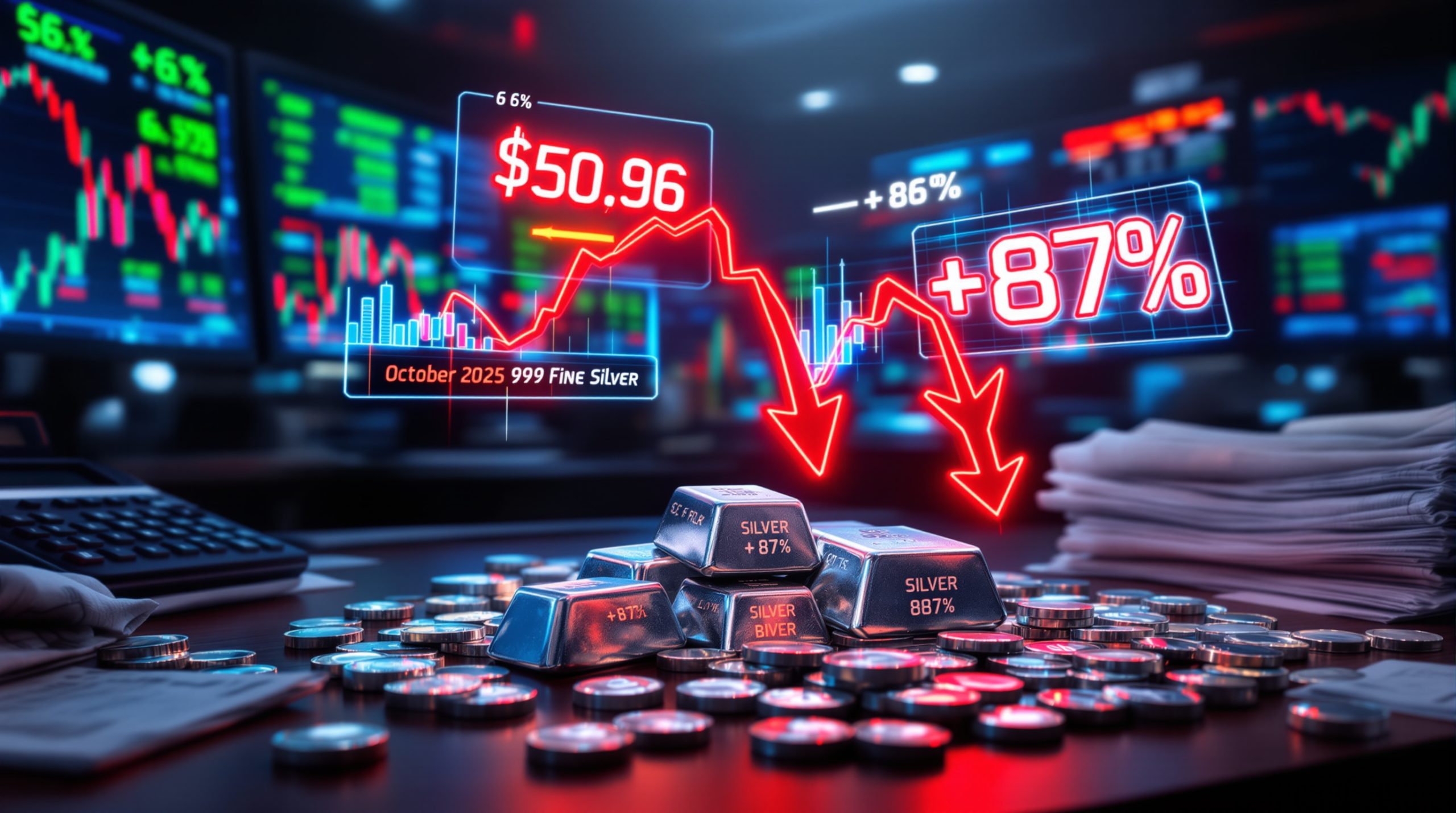Understanding Manganese's Growing Importance in Global Markets
Manganese stands at a pivotal juncture in the global commodities landscape, with its dual-market functionality creating unique growth opportunities despite current market fluctuations. This versatile mineral serves as both a critical component in traditional steel manufacturing and an increasingly important material in advanced battery technologies, positioning it for substantial long-term demand growth.
According to industry experts, stronger manganese demand and challenges are expected to characterize the market in coming years, driven by both traditional applications and emerging technologies. The metal's essential properties make it irreplaceable in steel production, while its growing role in electric vehicle (EV) batteries adds an entirely new dimension to its market potential.
The Dual Role of Manganese in Modern Industry
Manganese's value proposition stems from its versatility across multiple industries. In traditional steel manufacturing, manganese functions as an essential deoxidizer and desulfurizer, improving the quality and durability of steel products. Simultaneously, its emerging role in battery cathode materials positions manganese at the intersection of two major global trends: continued infrastructure development and the accelerating transition to electric mobility.
One particularly notable example of this dual-market approach is the Tshipi Borwa manganese mine in South Africa's Northern Cape province, which boasts an extraordinary mine life exceeding 100 years. This remarkable longevity allows operators to develop long-term supply strategies that span both traditional and emerging applications, taking advantage of industry innovation trends.
Industry leaders recognize this unique positioning. As Brad Rogers, CEO of Jupiter Mines (which owns 49.9% of Tshipi Borwa) noted, "There remains a defiant expectation of sustained growth in manganese demand over the long term, driven by traditional steel markets and the emerging demand from electric vehicle batteries."
How Is Traditional Steel Demand Shaping Manganese Markets?
Despite the excitement surrounding new applications, traditional steel production remains the cornerstone of manganese demand. Approximately 90% of global manganese production is directed toward steelmaking, where it serves critical metallurgical functions that cannot be easily substituted with alternative materials.
The steel-manganese relationship creates a stable demand foundation, with manganese consumption closely tracking global steel production trends. This correlation provides a degree of market predictability despite periodic price volatility.
Steel Production Remains the Primary Manganese Driver
The fundamental connection between manganese and steel production ensures consistent baseline demand regardless of market fluctuations. "Manganese is mostly being used in the manufacturing of steel and this offtake will continue to be the dominant channel for the metal going forward," explains industry expert Brad Rogers.
This metallurgical application requires specific grades and qualities of manganese, with premium pricing for higher-grade ores containing fewer impurities. Steel manufacturers typically prefer manganese ore with 44% Mn content or higher, creating market segmentation based on ore quality and characteristics.
Regional Steel Market Dynamics
The global steel landscape is experiencing significant regional shifts that directly impact manganese demand patterns. While China has traditionally been the largest consumer of manganese for steel production, recent data indicates changing dynamics.
"There has been a slight reduction of late in China-bound manganese demand," notes Rogers, reflecting broader economic adjustments in the Chinese manufacturing sector. However, this potential slowdown in Chinese consumption may be offset by accelerating demand elsewhere, as indicated in recent iron ore & China demand prospects analyses.
Particularly noteworthy is the expected growth in African steel consumption. "On the African continent there will be new demand for steel in African countries that are currently less steel intensive as they start to ramp up industrialisation," Rogers explains. Countries with historically low steel intensity (measured in kg per capita) have substantial growth potential as infrastructure development accelerates.
These emerging African markets represent a significant opportunity for regional manganese producers, potentially reducing transportation costs and supply chain complexities compared to more distant markets.
Supply-Side Transformations
A critical factor shaping the manganese market is the approaching end-of-life for several significant global manganese operations. Industry analysts have identified that multiple important manganese mines worldwide are "coming to the end of their lives over the next ten years," creating potential supply chain challenges.
This evolving supply landscape creates strategic opportunities for operations with substantial remaining reserves. As Rogers notes, this situation will likely "drive market-share growth opportunities in opencast African mines in particular, with long-life mines, such as Tshipi, taking more of the share of demand."
The combination of declining production at aging operations and growing demand creates favorable conditions for well-positioned producers with substantial reserve bases.
What Role Will Electric Vehicles Play in Manganese Demand?
The electric vehicle revolution represents a transformative force for manganese markets. As automotive manufacturers accelerate electrification & decarbonisation efforts, battery chemistry evolution creates significant new demand vectors for manganese, particularly in high-purity forms.
Modern EV batteries increasingly incorporate manganese in cathode formulations to optimize performance while reducing dependency on more expensive and supply-constrained materials like cobalt. This trend positions manganese as a beneficiary of the global transition toward electric mobility.
Battery Technology Driving New Demand
Battery manufacturers are progressively increasing manganese content in cathode materials to improve energy density, thermal stability, and cost-effectiveness. Manganese-rich formulations like NMC (nickel-manganese-cobalt) and LMFP (lithium-manganese-iron-phosphate) are gaining market share, expanding manganese demand beyond traditional steel applications.
As Rogers observes, "Renewed and rapid demand for manganese in steelmaking might result from the further development of EV batteries." This potential demand acceleration creates new market opportunities for producers capable of meeting the stringent quality requirements of battery applications.
The manganese intensity per EV battery varies significantly based on specific chemistries, but the overall trend points toward increased utilization as manufacturers optimize formulations to balance performance, cost, and resource availability.
High-Purity Manganese Products
Battery applications require substantially higher purity levels than traditional steel uses, necessitating specialized processing to create battery-grade manganese products. These high-purity materials—primarily manganese sulfate monohydrate (MSM)—command premium pricing but involve additional processing costs and technical expertise.
Currently, the market faces "overcapacity in the high-purity manganese sulphate market," creating near-term challenges for processors. However, this situation is likely temporary as EV production continues scaling globally, eventually absorbing this processing capacity.
The quality requirements for battery-grade manganese are exceptionally stringent, with impurity levels measured in parts per million rather than the percentage-based standards acceptable for metallurgical applications. This quality differential creates potential for significant value addition through downstream processing.
Market Positioning for Battery Materials
Forward-thinking manganese producers are strategically positioning themselves to capitalize on the growing battery metals investment landscape. This involves developing processing capabilities, securing offtake agreements, and establishing partnerships with battery manufacturers.
Industry consolidation through strategic acquisitions reflects this future-focused approach. For example, Exxaro Resources' acquisition of manganese assets including shares in the Tshipi Borwa mine demonstrates how companies are aligning their portfolios with projected battery demand growth.
As Rogers explains regarding such strategic alignments, "We see a shared strategy and vision with Exxaro, with the common viewpoints… that manganese has a robust demand future." This consensus among industry leaders underscores confidence in manganese's expanding role in battery technologies.
What Challenges Face the Manganese Supply Chain?
Despite promising demand fundamentals, manganese producers confront significant operational challenges that impact production costs, delivery reliability, and ultimate market competitiveness. These challenges span logistics, energy security, and transportation infrastructure limitations.
Effectively navigating these constraints requires operational flexibility, strategic planning, and investment in alternative solutions to ensure consistent supply chain performance.
Logistics and Transportation Constraints
Transportation infrastructure limitations represent a critical bottleneck for many manganese operations, particularly in developing regions. Rail systems in key producing countries often suffer from capacity constraints, maintenance issues, and operational inefficiencies that disrupt reliable ore movement.
These challenges have forced adaptations among producers. "Jupiter has been negatively impacted on by national rail challenges and has shifted its focus towards relying on transporting ore by road," explains Rogers, highlighting the need for transportation flexibility despite cost implications.
While road transportation offers greater reliability in many contexts, it typically carries higher costs. "Tshipi enjoys a good resource and operating base. [The mine is] able to road-haul profitably, although rail is more profitable and cost efficient," Rogers notes, quantifying the economic impact of transportation mode selection.
This cost differential can significantly impact producer margins, especially during periods of lower manganese prices, making transportation optimization a key competitive differentiator.
Energy Security Considerations
Power supply stability represents another critical operational challenge for manganese producers. Mining and processing operations require consistent, reliable electricity for efficient production, but many operating regions experience grid instability.
While recent improvements have been noted in some areas—with state-owned power utility Eskom's systems described as "recently been relatively stable and reliable"—prudent operators maintain backup generation capabilities to ensure operational continuity.
Forward-thinking operations are increasingly investing in self-generation capabilities to mitigate energy security risks. For example, "Tshipi Borwa was built to operate independently of the national grid, as it is self-reliant, owing to diesel generators and the plan for a solar PV and battery storage plant," demonstrating a multi-layered approach to energy security.
These energy resilience investments represent significant capital expenditures but provide crucial operational stability and potential long-term cost advantages as renewable energy economics continue improving.
Alternative Transportation Routes
To mitigate logistics risks, manganese producers are increasingly diversifying their transportation options through multiple port facilities and alternative export routes. This approach reduces vulnerability to disruptions at any single logistics node.
For example, Tshipi Borwa "takes a relatively material amount of its production out through the Port of Lüderitz, in Namibia," according to Rogers, demonstrating how geographic diversification enhances supply chain resilience.
These alternative routes may involve higher transportation costs but provide crucial reliability benefits, particularly during periods of congestion or operational disruption at primary port facilities. The ability to flexibly adjust logistics pathways based on real-time conditions has become an essential capability for competitive producers.
How Are Leading Producers Responding to Market Conditions?
Successful manganese producers are implementing sophisticated strategies to navigate market volatility while positioning for long-term growth. These approaches balance operational flexibility, reserve optimization, and strategic partnerships to enhance competitive positioning.
The industry's response to current challenges demonstrates how producers are balancing short-term market realities with long-term strategic positioning.
Operational Flexibility as a Strategic Advantage
The ability to adjust production levels in response to market conditions provides a crucial competitive advantage in the cyclical manganese market. Operations with flexible cost structures can scale production up during favorable pricing environments and reduce output when prices decline.
This flexibility extends beyond simple production volumes to encompass product mix adjustments based on specific market demands. Producers capable of pivoting between different manganese products—such as metallurgical ore, sinter, or higher-value derivatives—can optimize revenue streams regardless of individual market segment conditions.
Operational flexibility requires thoughtful mine planning, modular processing capabilities, and workforce management strategies that balance stability with adaptability. These capabilities represent significant investments but provide crucial protection against market volatility.
Long-Life Assets Gaining Value
As the industry confronts the approaching end-of-life for several significant manganese operations, assets with substantial remaining reserves are attracting increased attention from investors and strategic buyers.
The impending supply transition creates opportunities for "market-share growth… with long-life mines, such as Tshipi, taking more of the share of demand," according to industry experts. This dynamic particularly benefits opencast African operations with favorable ore body characteristics and substantial reserve bases.
The premium valuation for long-life assets reflects both immediate production value and strategic optionality to participate in future market growth, particularly as battery applications expand manganese demand beyond traditional steel markets.
Strategic Partnerships Enhancing Capabilities
Industry consolidation through strategic partnerships enables manganese producers to leverage complementary strengths, enhancing operational expertise, improving resource utilization, and strengthening market positioning.
Recent transactions demonstrate this consolidation trend, with companies strategically acquiring manganese assets to establish stronger market positions. These partnerships often combine operational expertise with financial resources and market access to create more resilient business models.
As Rogers explains regarding such alignments, "We see a shared strategy and vision with Exxaro, with the common viewpoints… that manganese has a robust demand future." This shared outlook facilitates productive collaboration and resource optimization across the value chain.
What Environmental and Sustainability Factors Impact Manganese Production?
Environmental, social, and governance (ESG) considerations have become increasingly important in the manganese sector, influencing operational practices, investment decisions, and customer relationships. Forward-thinking producers are implementing comprehensive mining sustainability transformation strategies to address these factors.
The industry's sustainability transition involves energy optimization, carbon footprint reduction, and enhanced community engagement practices that align with broader societal expectations.
Energy Transition Initiatives
Manganese producers are increasingly implementing renewable energy solutions to reduce carbon footprints and operational costs. Solar photovoltaic installations combined with battery storage systems represent a growing trend in the sector, particularly in regions with favorable solar resources.
For example, Tshipi Borwa's planned "solar PV and battery storage plant" demonstrates how operations are transitioning toward cleaner energy sources while maintaining the operational reliability provided by existing diesel generation capabilities.
These renewable energy investments deliver multiple benefits: reducing operational carbon emissions, decreasing exposure to fossil fuel price volatility, and enhancing energy security through diversified supply sources. The economics of these systems continue improving as technology costs decline and carbon pricing mechanisms evolve.
ESG Credentials Becoming Critical
Environmental, social, and governance performance has become a key differentiator for manganese producers. Companies with strong ESG credentials are better positioned to secure financing, establish partnerships with downstream customers, and maintain social licenses to operate.
As Rogers notes, investments in clean energy infrastructure "drive improvements in costs, ESG and the mine's overall carbon footprint," creating both operational and reputational benefits. These initiatives respond to increasing customer demand for responsibly sourced materials across the supply chain.
Manganese producers are implementing comprehensive ESG management systems that track performance across multiple dimensions, from environmental impacts to community engagement and governance practices. These systems provide both internal management tools and external reporting frameworks to demonstrate responsible operation.
Carbon Footprint Reduction Strategies
Beyond energy transitions, manganese producers are implementing broader carbon reduction strategies across their operations. These initiatives include fleet electrification, process optimization, and energy efficiency improvements that collectively reduce the carbon intensity of manganese production.
For energy-intensive processing steps, such as sintering or high-purity manganese sulfate production, efficiency improvements can deliver significant emissions reductions while also reducing operating costs. These process optimizations often require capital investment but deliver long-term economic and environmental benefits.
Some producers are also exploring carbon offset programs to address emissions that cannot be immediately eliminated through operational changes. These programs can support broader environmental and social initiatives while providing a transition mechanism toward lower-carbon operations.
What Is the Outlook for Manganese Markets?
Despite near-term challenges and market fluctuations, the fundamental outlook for manganese remains positive. The metal's essential role in steel production provides a stable demand foundation, while emerging battery applications create significant growth potential.
Industry participants expect continued market evolution, with periodic supply-demand rebalancing creating both challenges and opportunities for well-positioned producers.
Long-Term Growth Trajectory
The combination of traditional steel demand and emerging battery applications creates a diversified demand profile that supports long-term growth projections for manganese. As Rogers succinctly states, "Manganese has a robust demand future," reflecting industry consensus regarding the metal's prospects.
This optimistic outlook is supported by several structural factors: continued global infrastructure development driving steel consumption, accelerating electric vehicle adoption expanding battery material demand, and supply constraints as aging operations reach end-of-life.
The dual-market nature of manganese provides important demand diversification, reducing vulnerability to disruptions in any single end-use sector. This characteristic distinguishes manganese from more narrowly focused battery materials and contributes to its attractive long-term market profile.
Price Volatility Management
While the long-term outlook remains positive, manganese markets will likely continue experiencing price volatility driven by temporary supply-demand imbalances, inventory cycles, and macroeconomic factors. Successful market participants are developing sophisticated strategies to manage this volatility.
These approaches include flexible production planning that can respond to changing market conditions, diversified customer bases that reduce dependency on any single market segment, and financial hedging mechanisms where available.
Operations with lower cost positions are naturally better positioned to weather price volatility, highlighting the importance of operational efficiency, favorable ore body characteristics, and logistical advantages in determining competitive positioning.
Supply-Demand Balance Evolution
The manganese market is expected to experience periodic rebalancing as new supply sources come online and older operations reach the end of their productive lives. This dynamic will create both challenges and opportunities for market participants.
As several established mines approach closure within the next decade, replacement capacity will be required to meet ongoing demand. This transition creates strategic opportunities for development projects with favorable economics and geographic positioning.
The evolving supply landscape will interact with potentially accelerating demand from battery applications, creating a complex market dynamic that requires careful monitoring and strategic flexibility from all participants.
FAQs About Manganese Market Trends
How does manganese contribute to EV battery performance?
Manganese improves energy density and thermal stability in lithium-ion batteries while reducing dependency on more expensive metals like cobalt. Its incorporation in cathode materials helps optimize the cost-performance balance in EV batteries. Different battery chemistries utilize varying amounts of manganese, with some formulations containing up to 30% manganese
Ready to Capitalise on the Next Major Mineral Discovery?
Discovery Alert's proprietary Discovery IQ model delivers instant notifications on significant ASX mineral announcements, transforming complex data into actionable investment insights. Explore how major mineral discoveries can generate substantial returns by visiting our dedicated discoveries page and begin your 30-day free trial today to position yourself ahead of the market.




